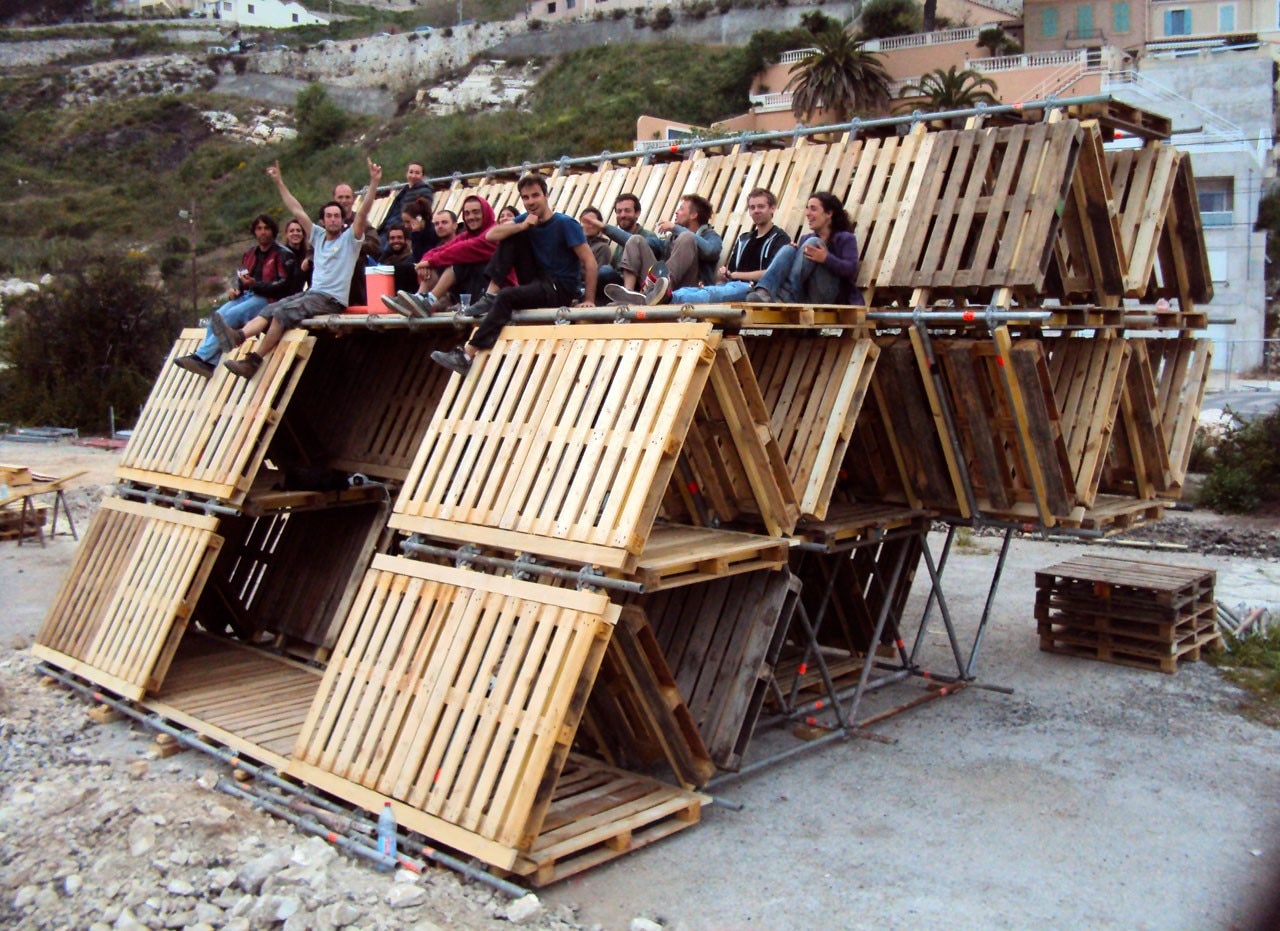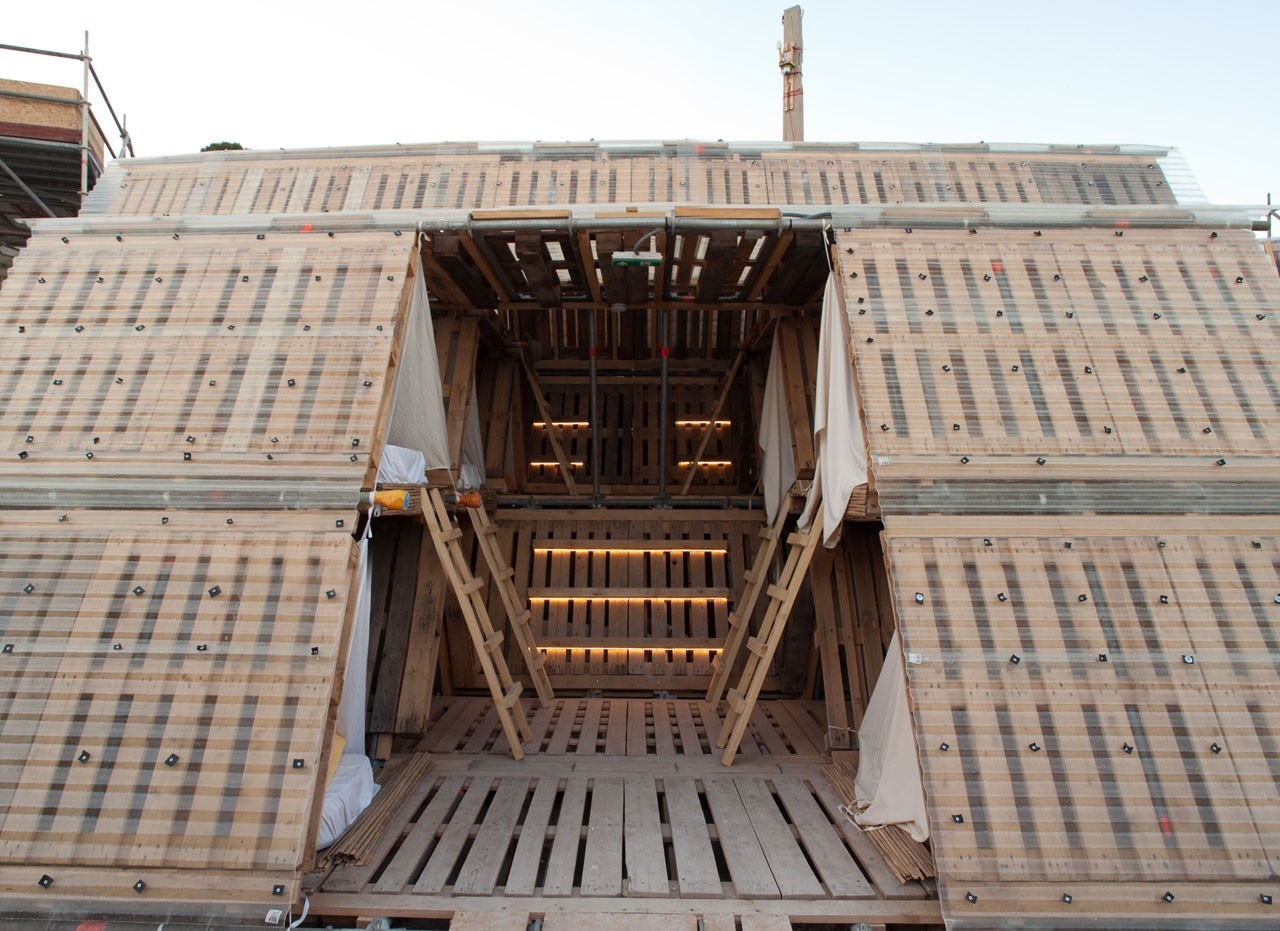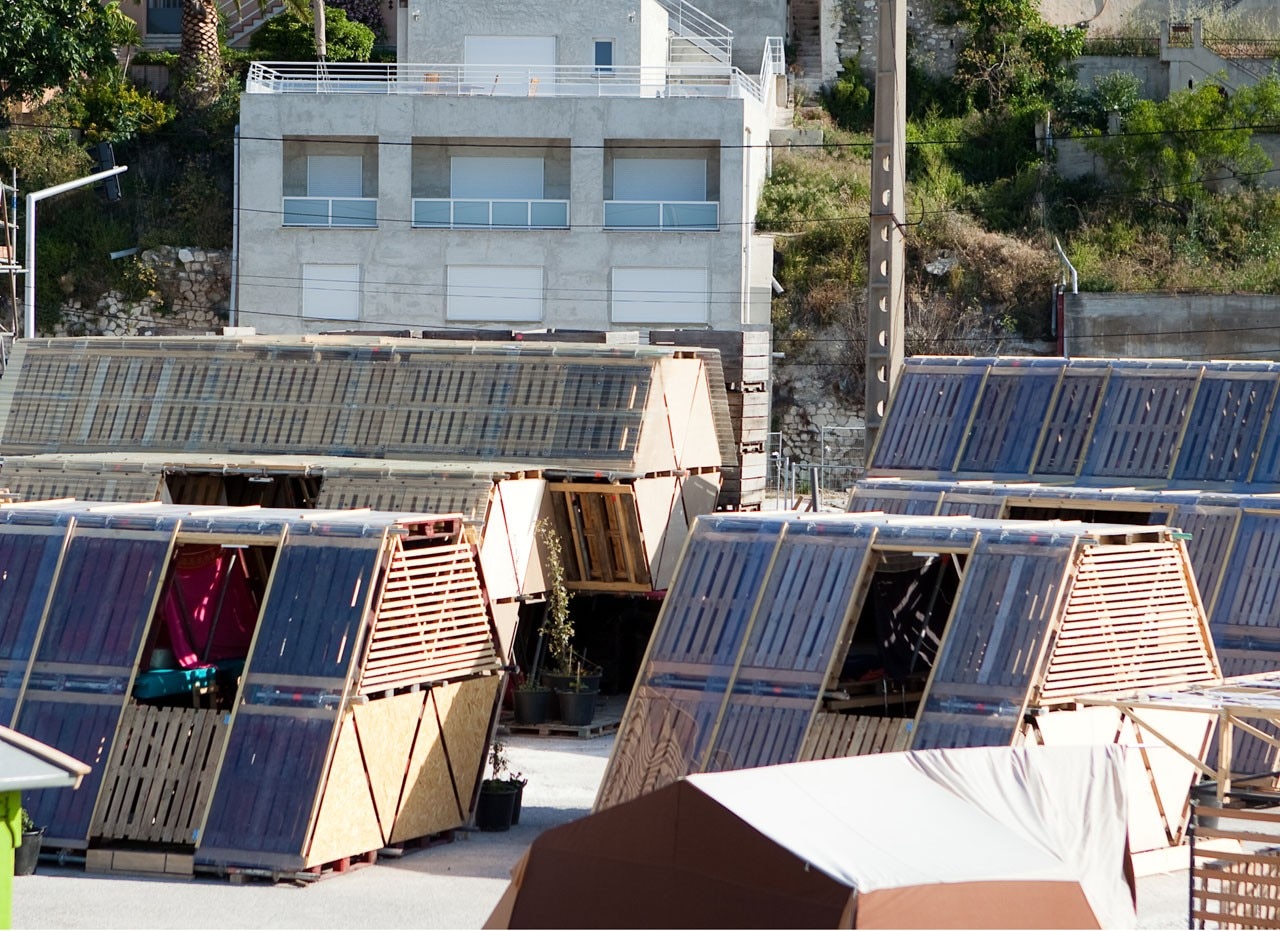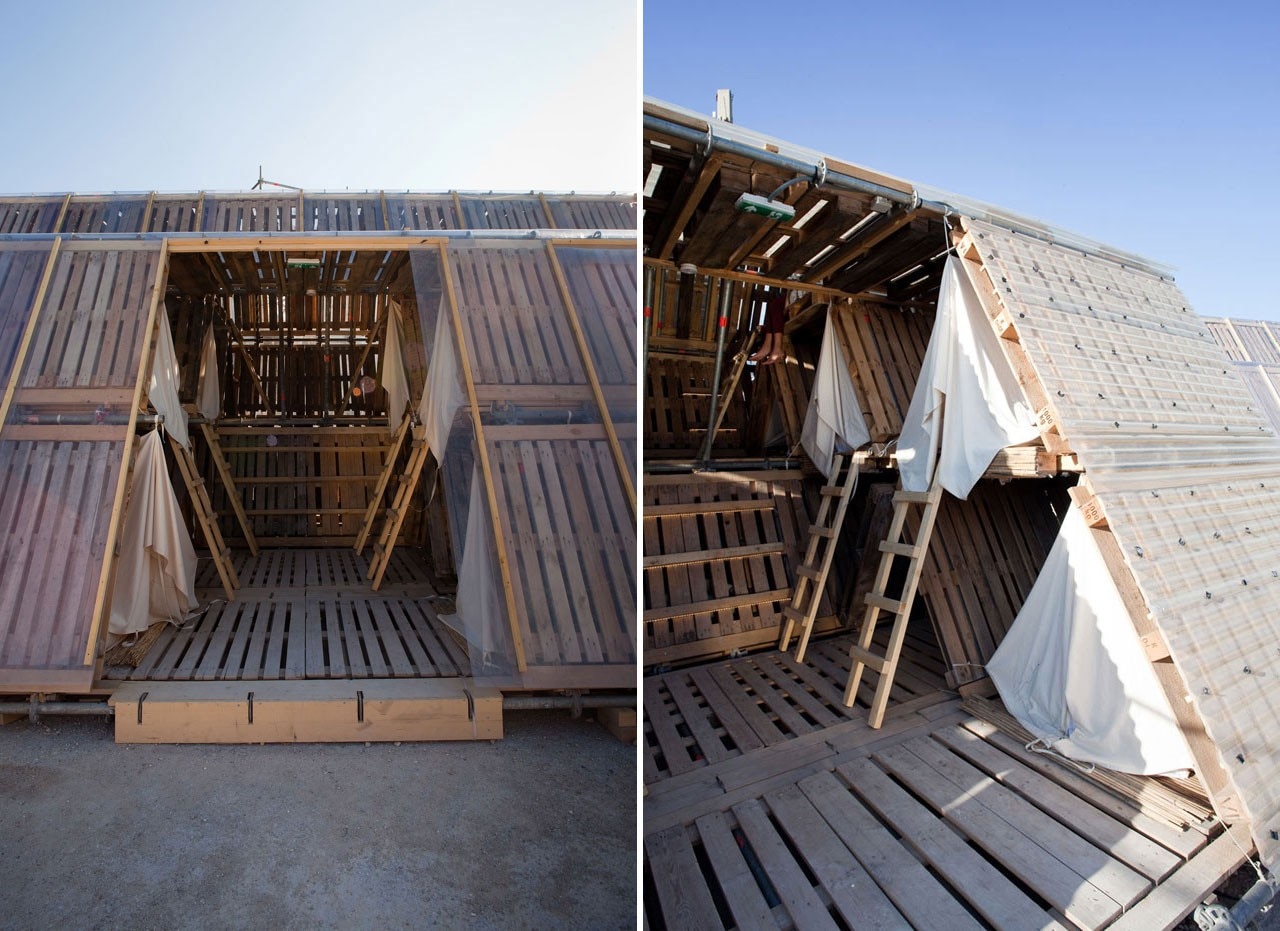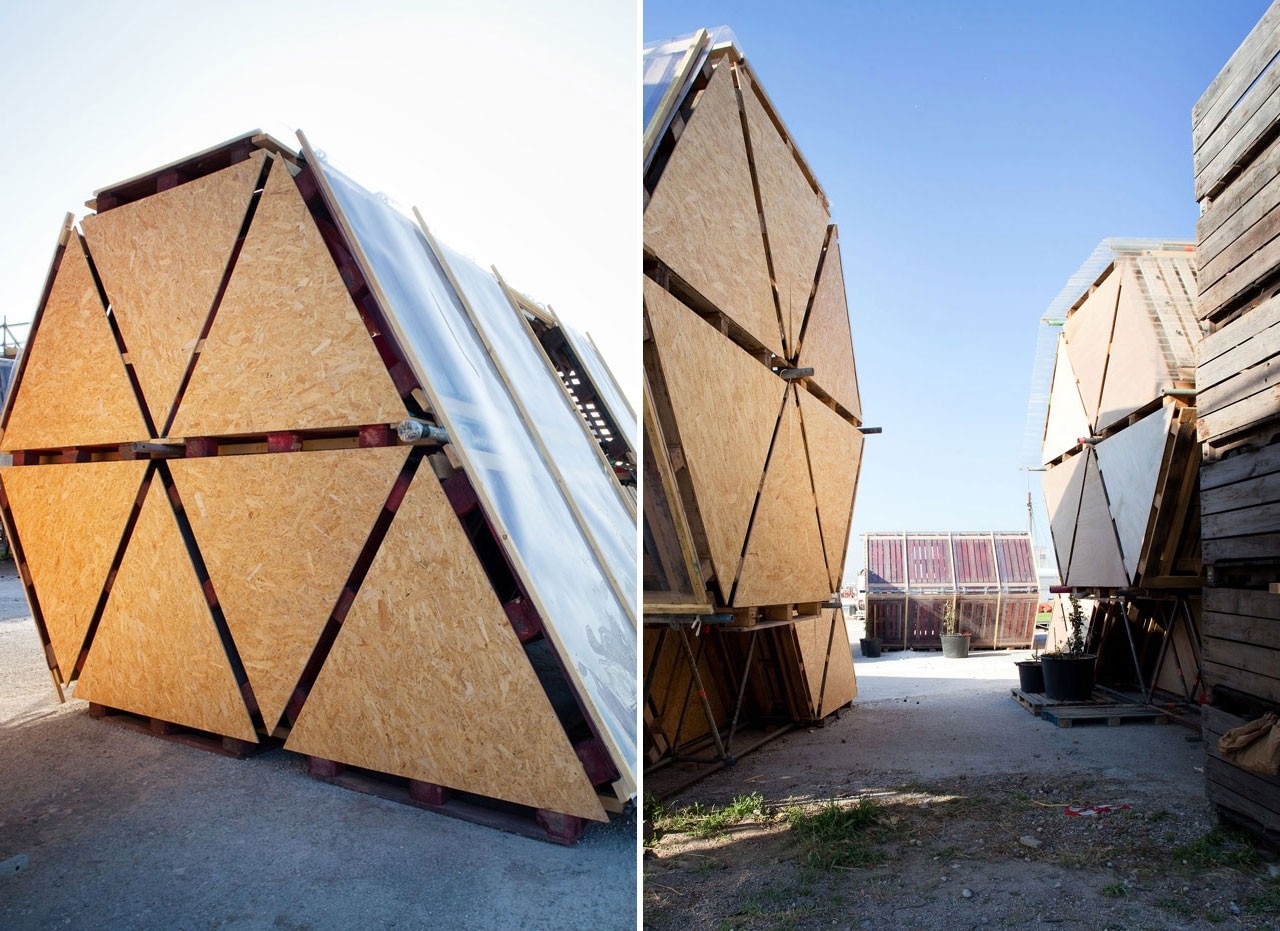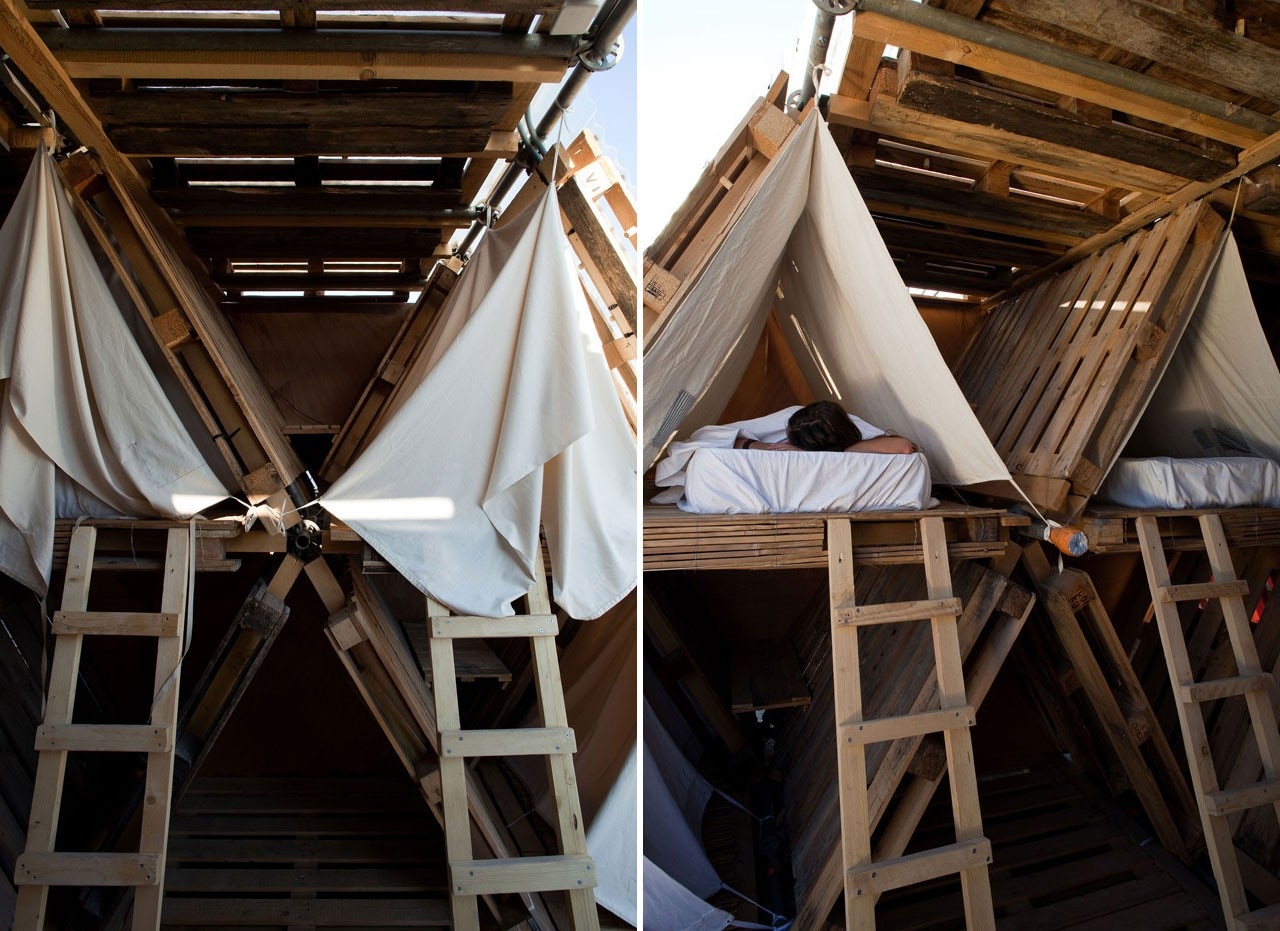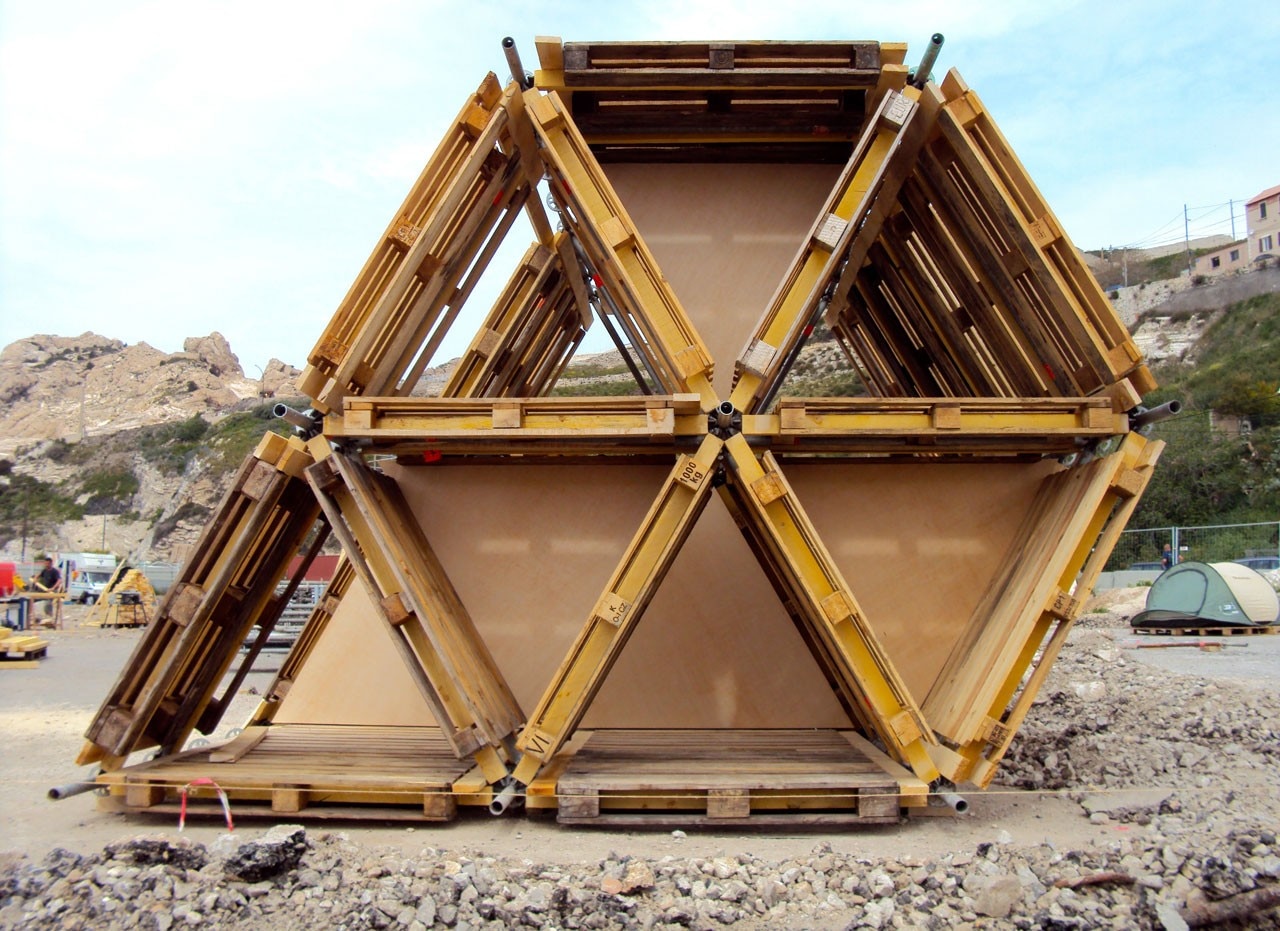
This construction system is cheap and produces zero waste, and installs the possibility of adaptation and co-creation of a design on site, due to its modular nature. It can thus provide infrastructure for different functions: an event stage, an exhibition space, an urban bar, a public space reappropriation tool, an urban camping dormitory, and many more.
Hexa Structures is the current state-of-affairs of a prototyping culture, in which the architectural design process goes through phases of prototyping, and iteration, with different volunteers and functions.
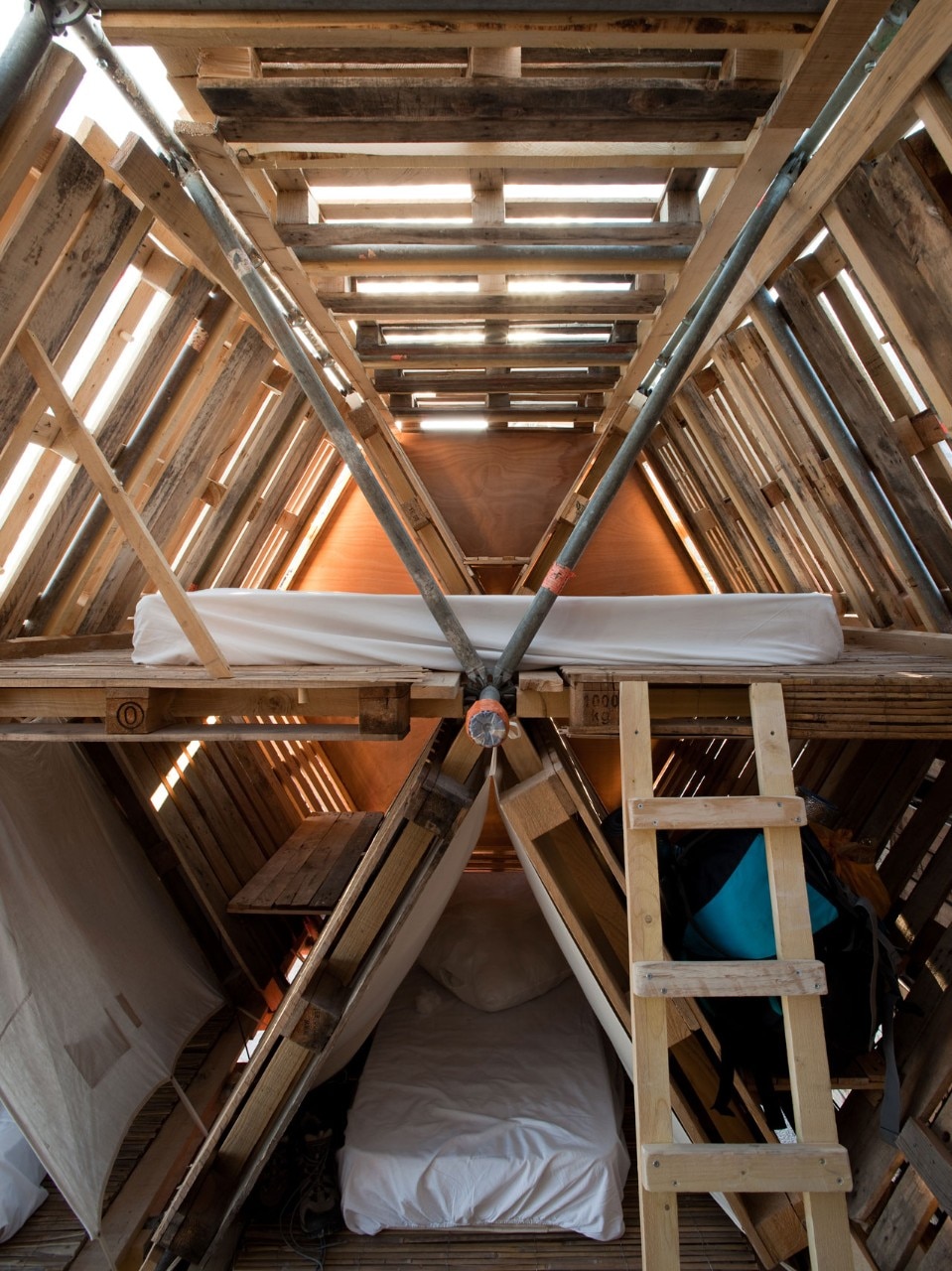
It started as a wasteland fencing project, into becoming a prototype for public space appropriation in migrant quarters in Brussel towards the urban camping of Yes We Camp Marseille.
The design approach makes use of steel scaffolding components as load carrying structural members, wooden pallets as load carrying infill and wooden plates as skin cover. The hexagonal scaffolding structure consists of an unusual and innovative use of scaffolding components.
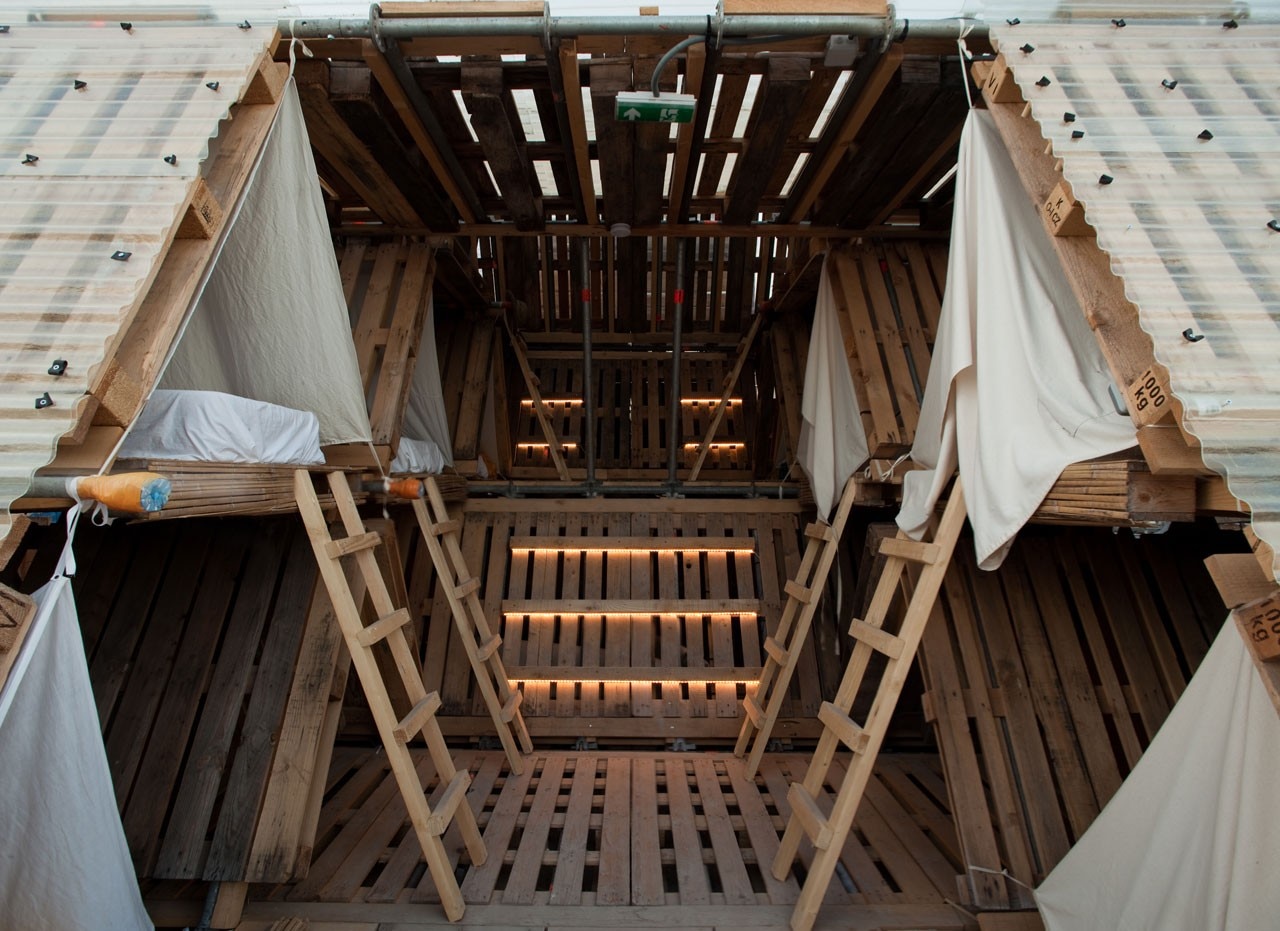
The vertical load carrying component, called ‘standard’, is used horizontally, while the horizontal load carrying component, ‘ledger’, is connected to the standard’s connection ring, ‘rosette’, under an angle of 60°, thus creating a stable hexagonal multidirectional structural grid. The wooden pallets are placed on and connected to the ledgers by the use of low-tech fastening techniques only. In addition, the pallets are connected to each other to ensure the stability of the load carrying infill.
To close the triangulated faces of the structure, different materials can be applied. Wooden plates, wooden blinds, aluminium plates, glass etc. can be connected to the sides of the pallets.
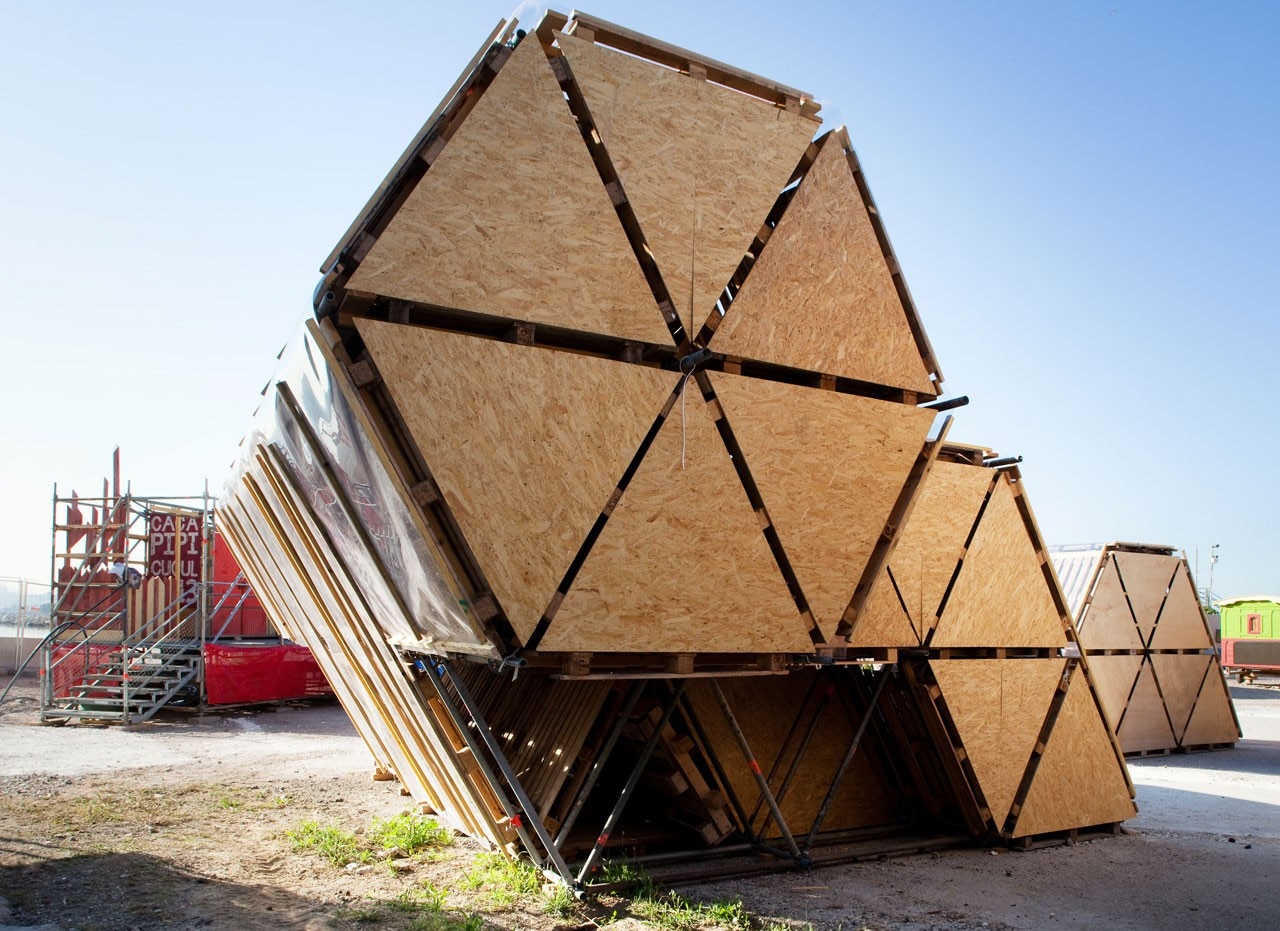
Hexa Structures
Marseille, L'Estaque
Architects: BC studies with Michael Lefeber
Design team: BC Studies & Michael Lefeber, Construction system, Michael Lefeber, Interior, Eric Pringles & Inéha Costerousse
Structural engineering Consultancy: Ken Spranghers
Construction supervision: Michael Lefeber & Jago Meert
Client: Yes We Camp, Marseille
Facilitated by: MyCityLab
Built area: 400 sqm + landscape
Design phase: March 2013
Construction phase: April 2013 – June 2013
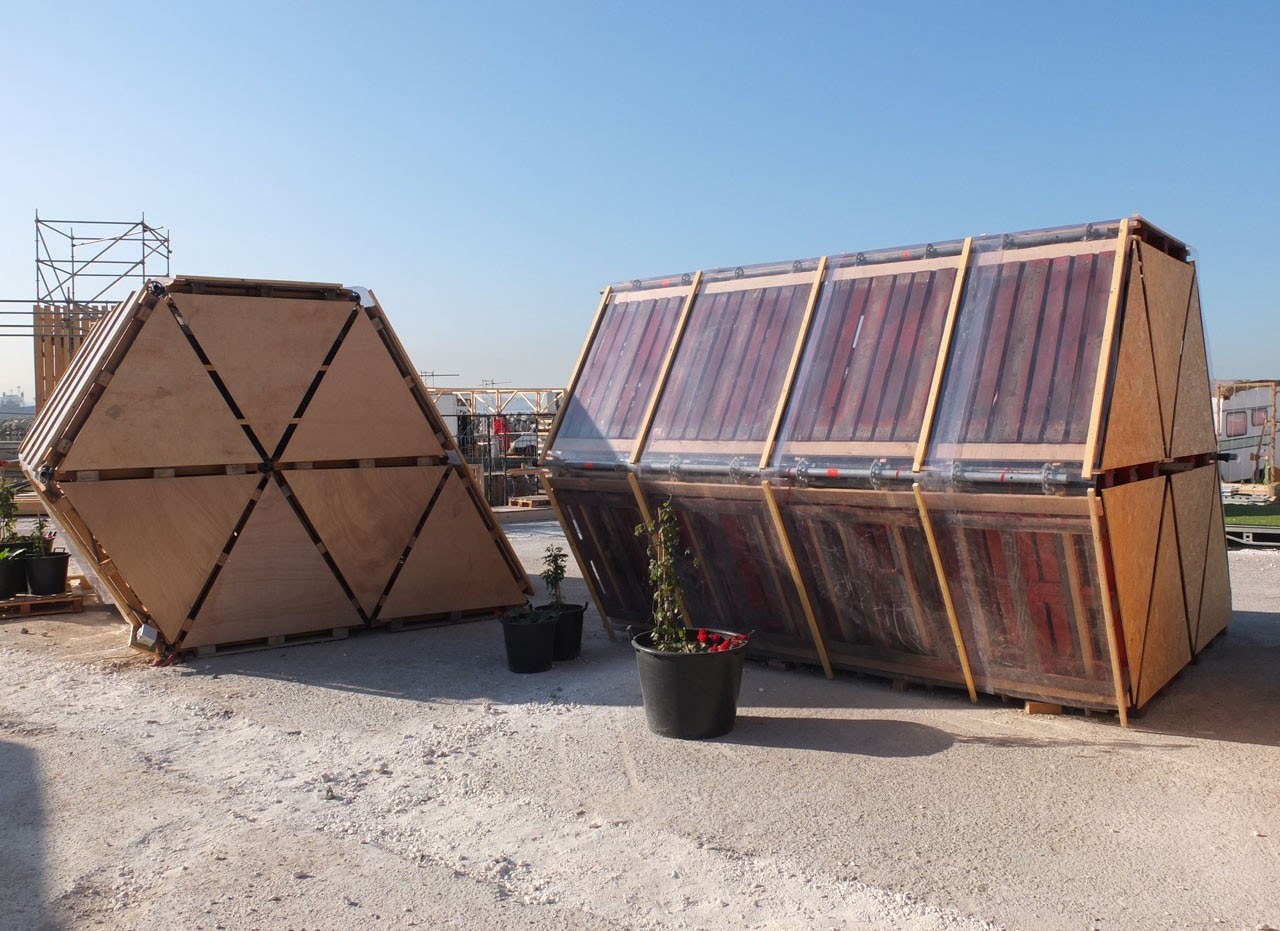
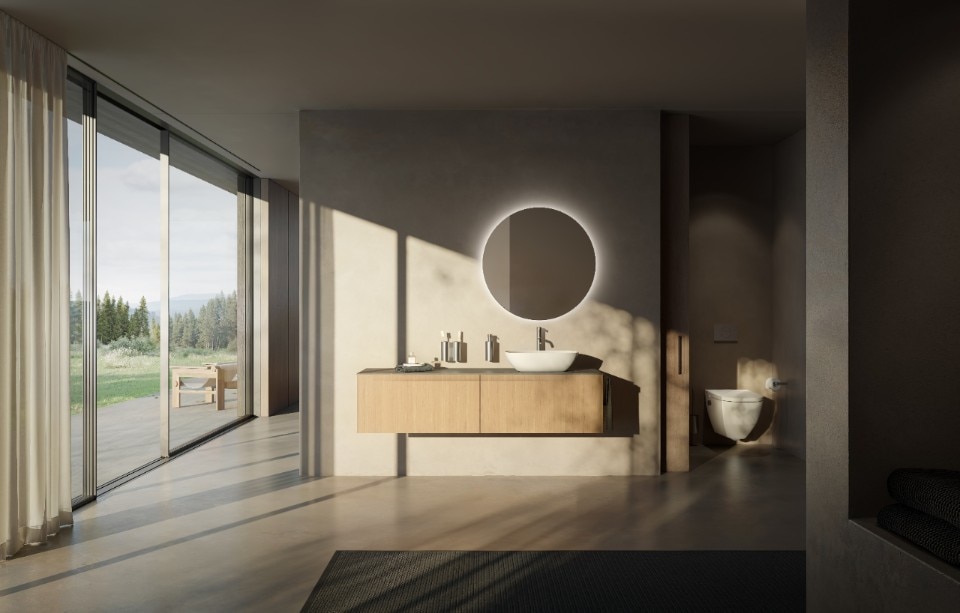
The Bathroom becomes an oasis of well-being with Laufen
Laufen continues to innovate, elevating the bathroom environment to the heart of daily well-being with two new collections: ARUN and CLEANET AURIA.



